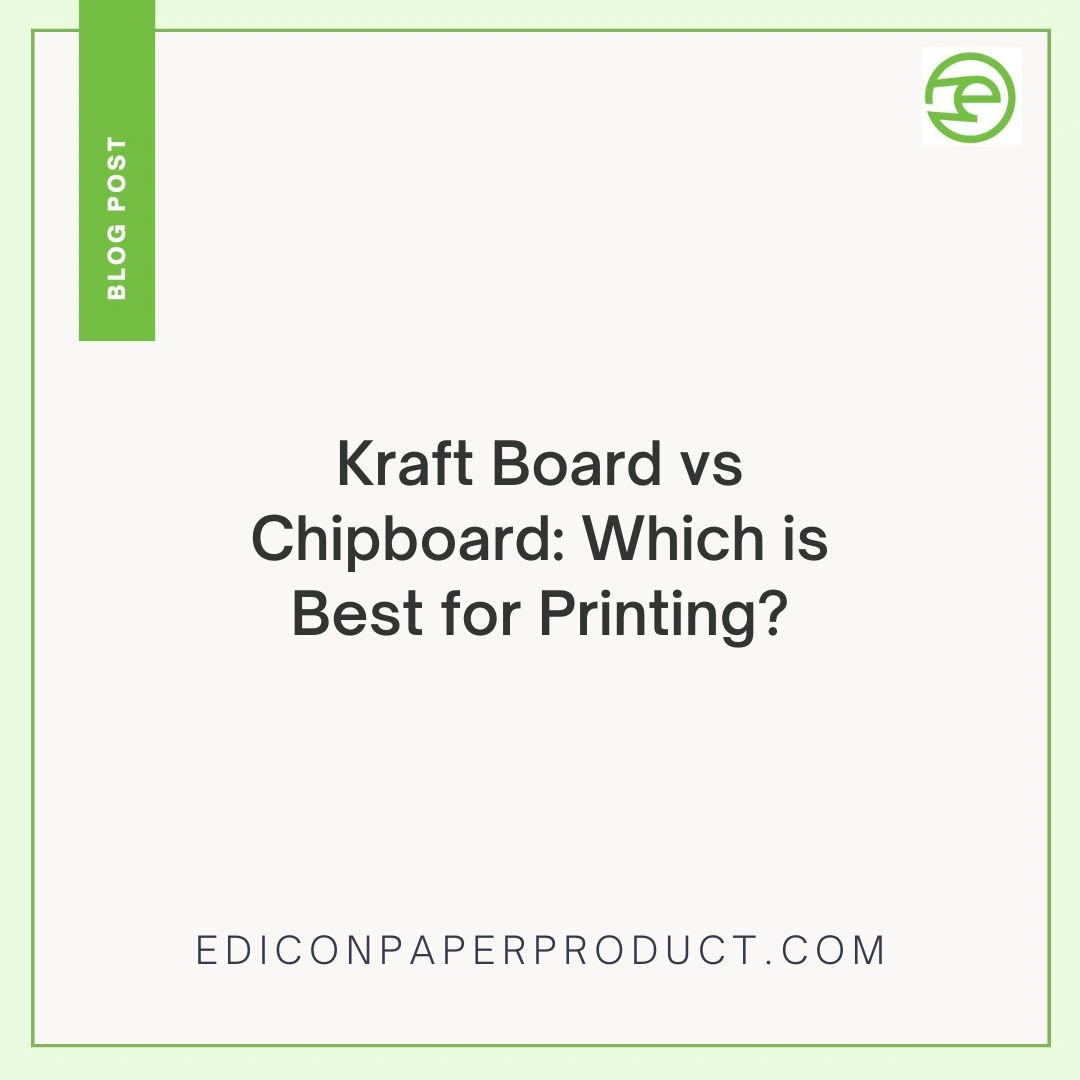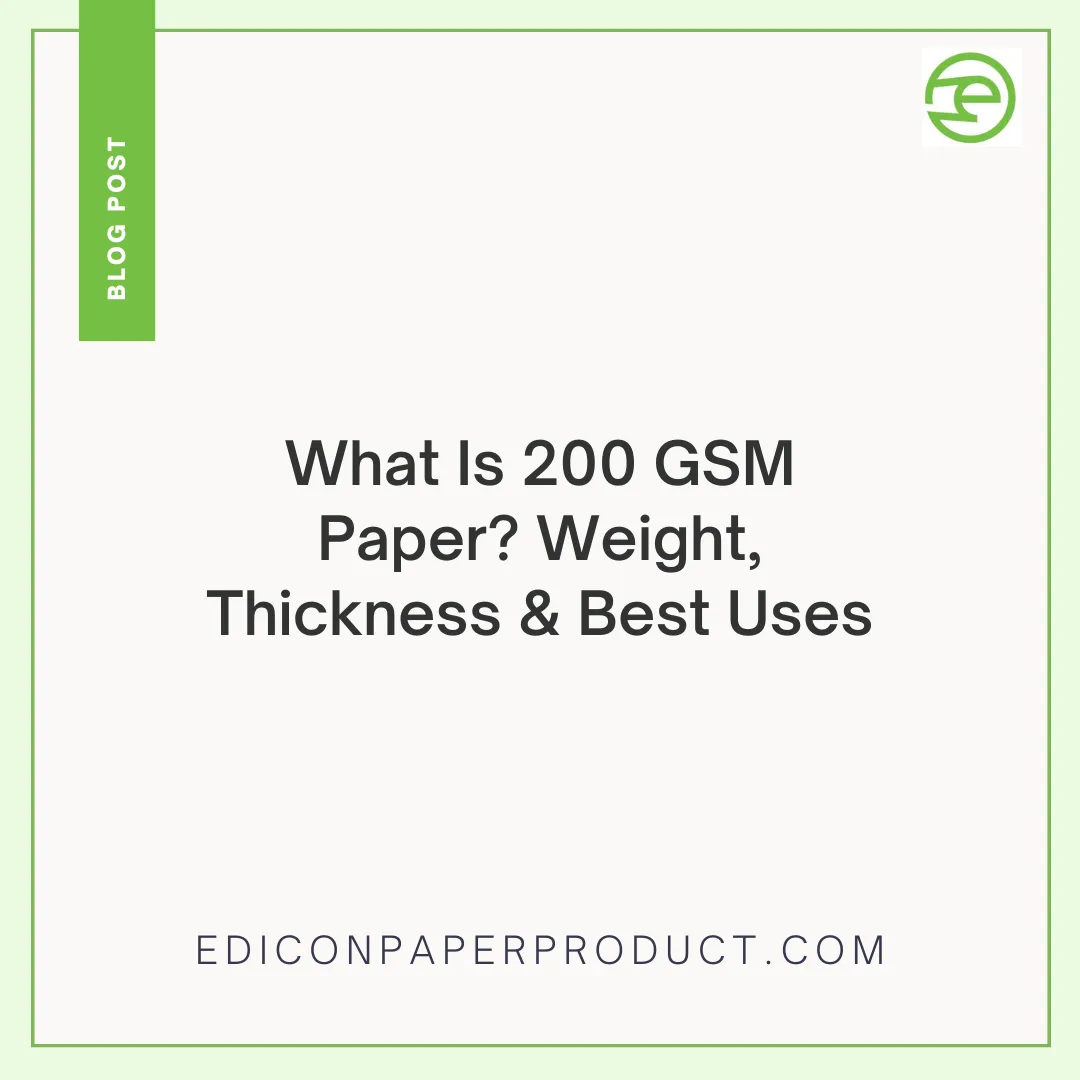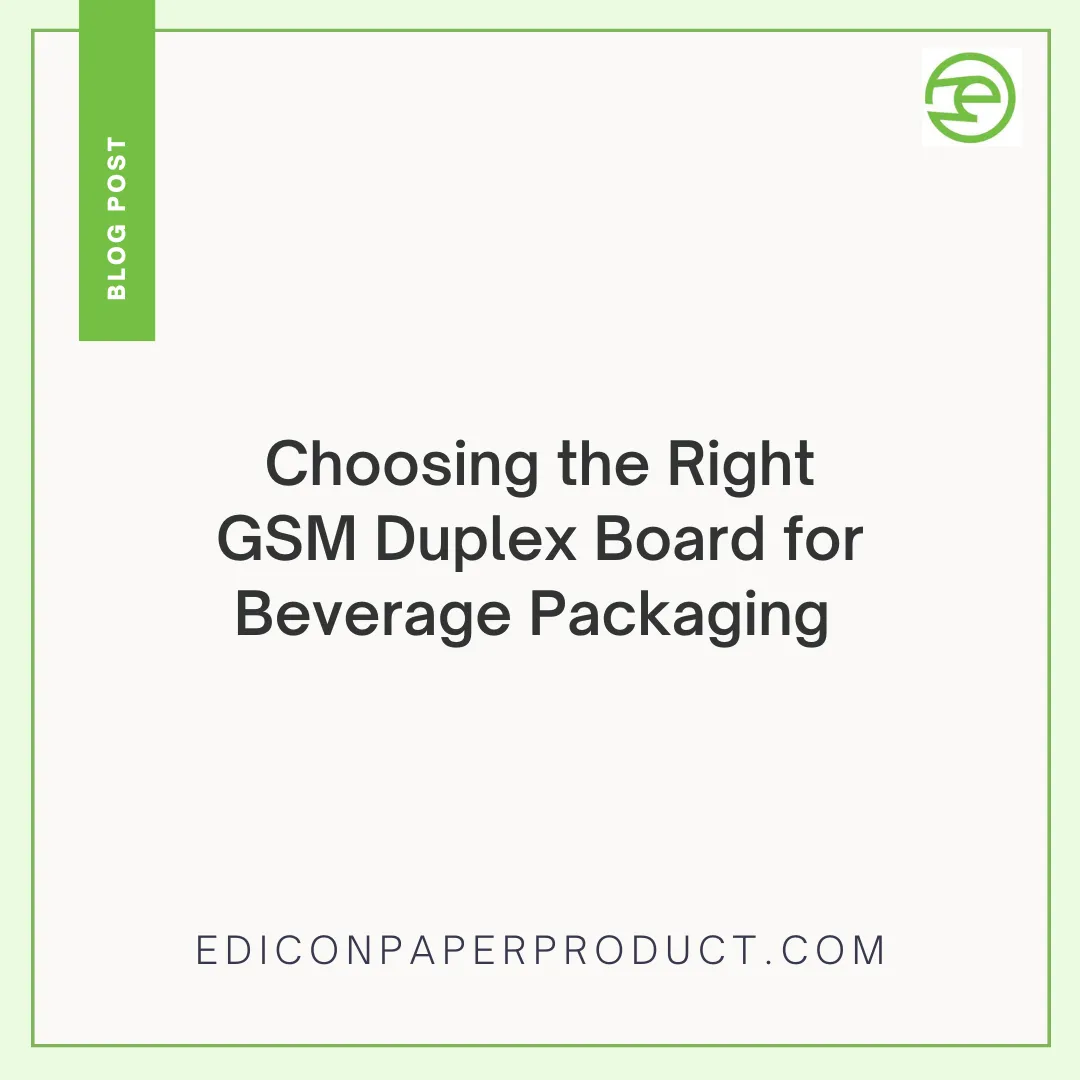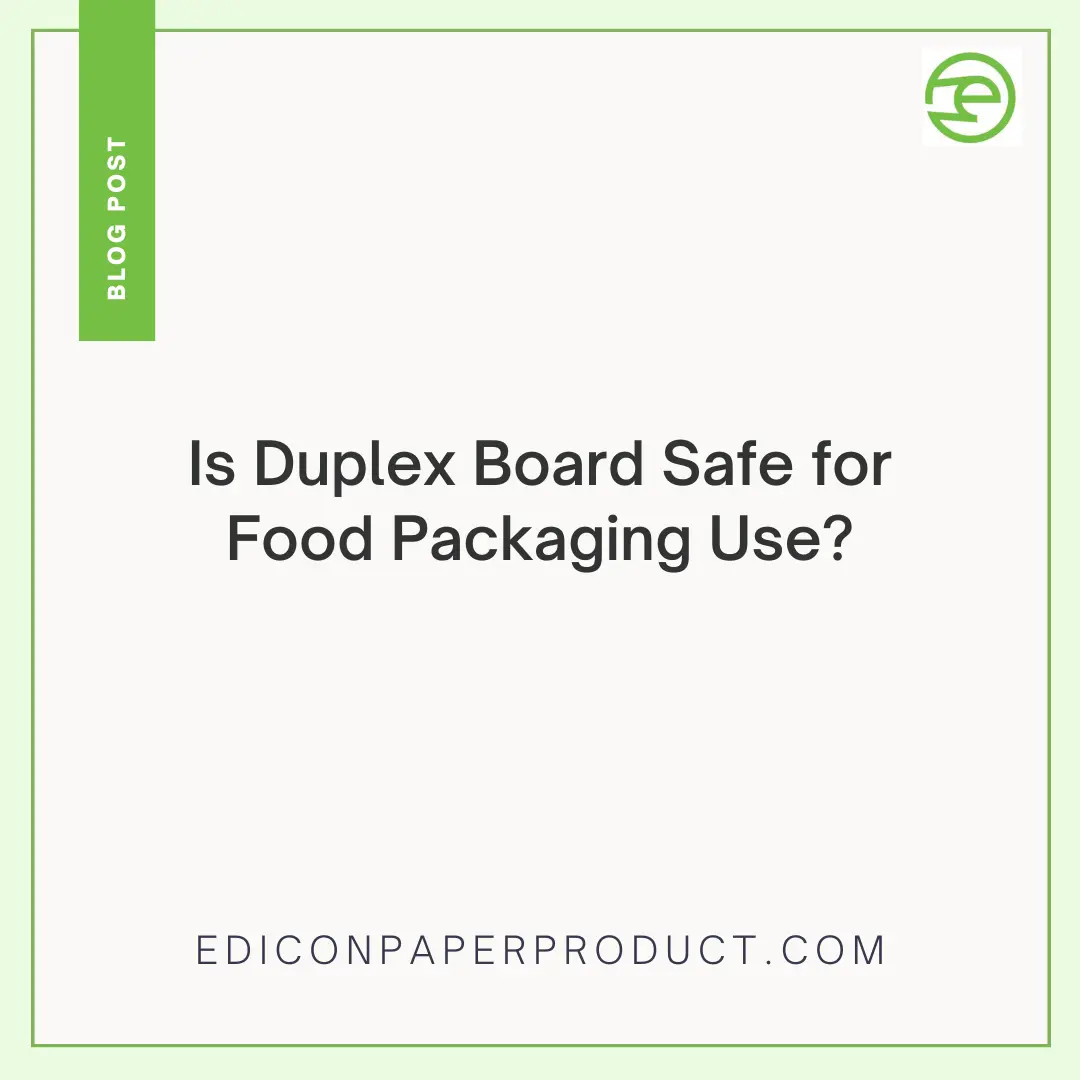Kraft Board vs Chipboard: Which is Best for Printing?
Picking the substrate for packaging, graphic design and how the product is presented matters because it largely determines the outcome. Kraft board and chipboard are among the most common materials for printing on a board. There are many differences in the benefits, ease of printing, cost and the sustainability of both packaging and print film. This helpful guide provides an overview of the pros, cons and where each printer is best used, to assist you in deciding on your next printing.
What is Kraft Board?
![]()
It is common to use virgin wood pulp in the kraft process to produce kraft board (also known as kraft liner and kraft cardboard). Producing long and robust fibers in the board makes it strong, able to withstand tearing and very durable. One can bleach or cover a kraft board over to produce sheets with white or various bright hues. Brown paper is commonly chosen for packaging, premium cartons, tags and any use that requires both strength and a natural effect.
Key Features of Kraft Board
• High strength and tear resistance: If strength and resistance to ripping are important, Polypropylene is the ideal material.
• Natural brown color: Reveals the product is environmentally friendly and creates a natural charm.
• Smooth, printable surface (when coated): Coating on a kraft board for printing and branding of images and graphics using high-quality inks.
• A variety of uses: Used for offset, screen, flexo and digital printing, as well as die-cutting, grooving and creasing.
• Moisture and burst resistance: When coated or laminated, the packaging becomes good for packed food, frost resistance and chilling products.
What is a Chipboard?
![]()
Chipboard is a paperboard that is manufactured from recycled paper and cardboard. It usually comes in gray or brown, whereas kraft is smoother and treated. Besides being less harmful to the environment, chipboard is also low in cost and can be used in many ways. In many cases, it is used to make backing boards, cover notebooks, create game boards, package light items and for use where strength hardly matters.
Key Features of Chipboard
• Made with recycled materials: A green option for brands concerned about the environment.
• Smooth printing: You can count on a cleaner, more even finish for printing, but it is not quite as polished as coated kraft board.
• Easy to use and adjust: Various thicknesses and grades let you choose the right material for your needs.
• Lower cost: It is cheaper to make than virgin-fiber boards.
• Lower strength and moisture resistance: Less thick and hard in nature, so ideal for lightweight or dry items.
Kraft Board vs Chipboard: Key difference
![]()
Surface Finish & Print Quality
Kraft Board
• Coating Kraft Board: Applying a coating makes the kraft board smooth and very bright, allowing for excellent quality printing such as full color graphics, branding and pictures. Coated kraft boards find use in making quality packaging, high-end boxes and marketing materials.
• Uncoated Kraft Board: The porous, rough surface may affect the quality of visual elements and brightness of colors. On the other hand, it fits best with themes that highlight organic, a rustic style or going green.
Chipboard
• A high-quality surface: Printer-friendly surfaces can be found on even the lowest chipboard grades. Since the surface does not vary, it supports the use of sharp designs.
• Color and Texture: Most chipboards are gray or brown and uncoated and therefore may not be accurate or very vibrant. A coating of laminate or printed paper makes the menu look more attractive.
• Drawback: Because lower-grade chipboard has a rougher coating, its ink might seep differently, making the print appearance less precise than a kraft board with a smooth finish.
Strength, Durability & Suitability
Kraft Board
• Strong and Secure: The long fibers in the kraft board ensure it is tough against tearing, bursting and unstable stacking.
• Moisture Resistance: Coated kraft board is able to withstand moisture, making it ideal for frozen food, beverages and packaging in the open air.
• Premium Applications: Created for products that require quality packaging, luxury and strong construction.
Chipboard
• Lightweight and Rigid: The stiff chipboard is somewhat stronger than ordinary cardboard and packs well, but is less strong than a kraft board.
• Sensitive to Humidity: Easier for the wood to deteriorate or splinter when faced with humidity or liquids.
• Suitable for Lightweight Orders: It is ideal for wrapping boxes, inserts and slip sheets for soft or light materials.
Environmental Impact
Kraft Board
• Recycled: Kraft board can be recycled and is compostable, as long as the surface has not been coated.
• Hybrid Products: Some kraft boards are designed by including recycled content and have good properties and are sustainable.
Chipboard
• 100% Recycled Content: Chipboard is a very eco-friendly material since it is made from waste paper.
• Recycle Again: After use, the material from the chipboard can be recycled once more for closure.
• Less Energy Needed: Compared to other types, using chipboards requires less energy and fewer fresh resources.
Printing Techniques & Considerations
Kraft Board
• Offset Printing: Kraft board with a coating makes it possible to use high-resolution offset printing, resulting in vivid colors and sharp details.
• Screen Printing: Is useful on surfaces that are either coated or not, placing emphasis on making bold graphic designs or special ink prints.
• Flexo and Digital Printing: commonly used for small production runs, custom packages and varied details.
• Die-Cutting and Finishing: kraft board is so strong, it can be die-cut, embossed and finished with innovative special effects.
Chipboard
• Offset and Digital Printing: Though higher-grade chipboards can print in finer detail, its colors may not be as bright as when using coated kraft boards.
• Lamination: increases the quality of the chipboard and the prints, as well as its durability.
• Best for Simple Graphics: Flat colors, lines and plain text are detailed on this paper, while photographic pictures sometimes appear washed out.
Applications: When to Use Each Board
Kraft Board is Especially For
• Premium and promotional packaging
• Food and beverage cartons coated with FDA-approved substances are safe
• Gift boxes, tags and luxury items
• Graphic displays and signs
• Reliable packaging for industrial purposes
Chipboard is Especially For
• Boards used for pads, notebooks and calendars
• Board games, puzzles and crafty packages
• Light packaging used for dry goods, cosmetics and retail products
• Slip sheets, dividers and inserts
• Sustainable brands are using eco-friendly packaging
Industry Examples
Premium Chocolate Box: This box is made from white-coated kraft board and features a smooth and bright finish, safeguarding your products due to its strength and resistance against water.
Notebook Backing: For notepads and sketchbooks, chipboard provides strong, friendly to the environment and affordable backing material.
Game Board: Most puzzles and board games are made with high-grade chipboard which is printable and tough enough for continuous playing.
Frozen Food Carton: The coated kraft board is preferred for the frozen food industry due to being moisture-resistant and meeting the needs of food safety.
Conclusion: Which is Best for Printing?
Both kraft board and chipboard offer distinct advantages for printing, depending on the needs of your project. Kraft board stands out for its durability, eco-friendly appeal, and natural aesthetic—perfect for brands aiming for a rustic or sustainable look. On the other hand, chipboard offers a smoother surface ideal for high-quality prints and is a more economical option for various packaging applications.
Ultimately, the best choice comes down to your specific goals—whether you value print quality, sustainability, or budget. At Edicon Paper Products, we offer kraft board solutions tailored to your printing and packaging needs. Get in touch with our team to find the perfect fit for your next project.






